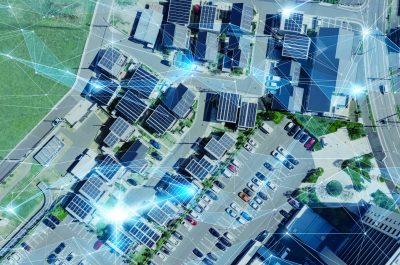Stand-alone power: More than going the distance
We talk a lot about stand-alone power systems (SAPS) and the benefits they bring to customers. A once in a generation technologically-driven shift in the way energy can be delivered is worth talking about.
A SAPS generally comprises solar PV, batteries and a back-up generator. They allow electricity services to be delivered to customers without a traditional grid connection, improving reliability and safety with lower cost. The economic case for using SAPS is clear and networks are getting on with it.
But there is one commonly held misconception about where a SAPS makes sense to implement, which is that the economic feasibility of a SAPS simply depends on the distance away from the rest of the grid.
But that isn’t the case.
The operating environment can also significantly influence whether a SAPS will be the most economical supply solution for customers. While many commentators often use distance from the grid to explain the benefits of a SAPS because of its simplicity (including us, sorry), it’s time to dig deeper.
Fronting up
The upfront capital cost of supplying electricity to customers with either a grid connection or a SAPS system connection is a material factor in determining the most efficient supply option.
One of the biggest factors determining the grid connection cost is how far the customer is located from the rest of the network. The more poles and wires required to serve a customer, the higher the asset cost will be. More poles and wires also means higher replacement costs when the assets need to be replaced to keep the lights on.
SAPS asset costs usually include the purchase of solar panels, batteries and a back-up diesel generator. SAPS assets, however, will likely require more constant replacement than poles and wires because batteries and solar PV generally have a shorter life span than poles and wires that can often last more than half a century.
Impact of operating environment
Networks actively manage a broader range of environmental risks for poles and wires than they do for a SAPS because there are more uncertainties in the open environment than a customer’s property. Additional operating environment costs are necessary to manage poles and wires to ensure customers are delivered a safe and reliable electricity service.
The location of poles and wires impacts on the types of risks a network must manage. For example, coastal poles and wires are subject to corrosive sea breezes which can drastically reduce their expected life. Asset replacement is required on a shorter cycle which can make it more expensive to service some coastal customers.
Poles and wires in densely vegetated areas incur additional operating costs to prune vegetation and maintain customer reliability. There is a higher risk that trees will topple and fall on power lines potentially resulting in more outages. Crews might have trouble accessing the incident site, meaning more outages which are likely to last longer. With more foliage and shrubbery around, incidents in densely vegetated areas also have a higher risk of starting fires which leads to additional bushfire mitigation costs.
More than a measuring tape needed
Evaluating whether a SAPS is economic depends on the assortment of environmental characteristics relevant to the specific network area. Once all operating environment costs are factored in, the total cost and benefit of a grid connection and a SAPS can be evaluated. Factoring in these operating environment costs can reveal potential SAPS candidates that might have been overlooked using a simple distance assessment.
An existing grid-connected customer situated amongst a densely vegetated forest reasonably close to the rest of the network might be an economical SAPS candidate. Because of their environmental circumstances, this customer might be more expensive to serve with poles and wires than a SAPS located on the customer’s property.
Essential Energy’s SAPS trial in Bulahdelah is a prime example. The area has high rainfall, is prone to floods and bushfires, is densely vegetated and difficult for crews to access[1]. Located at the end of a 5.5km spur line which only serves two customers, the high cost of maintaining the line and relatively lower reliability than the network average mean that the site is a textbook SAPS candidate. A SAPS instead of a network connection makes sense here – it would not only be cheaper overall to supply electricity, but the customer would also spend more time with the lights on.
The urban SAPS?
This doesn’t mean that all customers near-enough to the grid should be served with a SAPS, indeed quite the contrary. The overwhelming majority of SAPS customers will be rural and remote customers with a minority coming from other expensive, environmentally challenging areas of the network.
For all their benefits, A SAPS still doesn’t stack up for medium and high-density urban customers who currently receive reliable, cost-effective services from the interconnected grid.
[1] Regulatory Information Notice, Supporting Information for Demand Management Innovation Allowance, 2017-18. p. 28-34.



